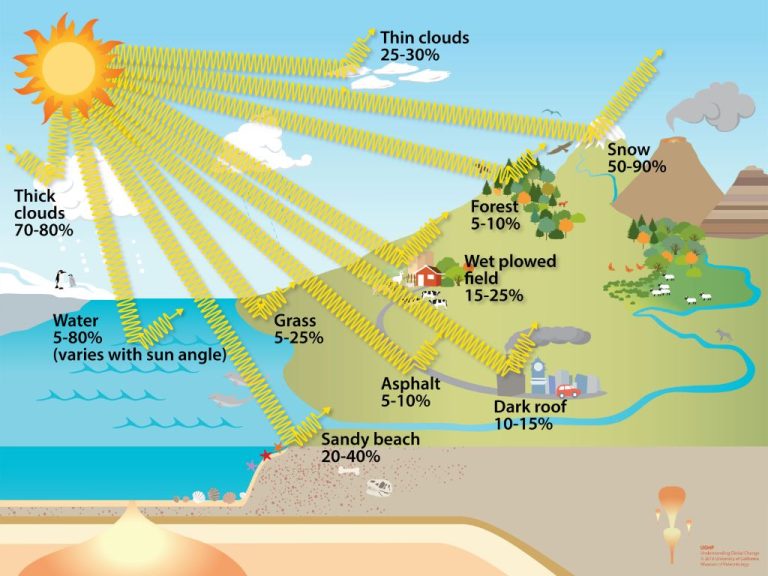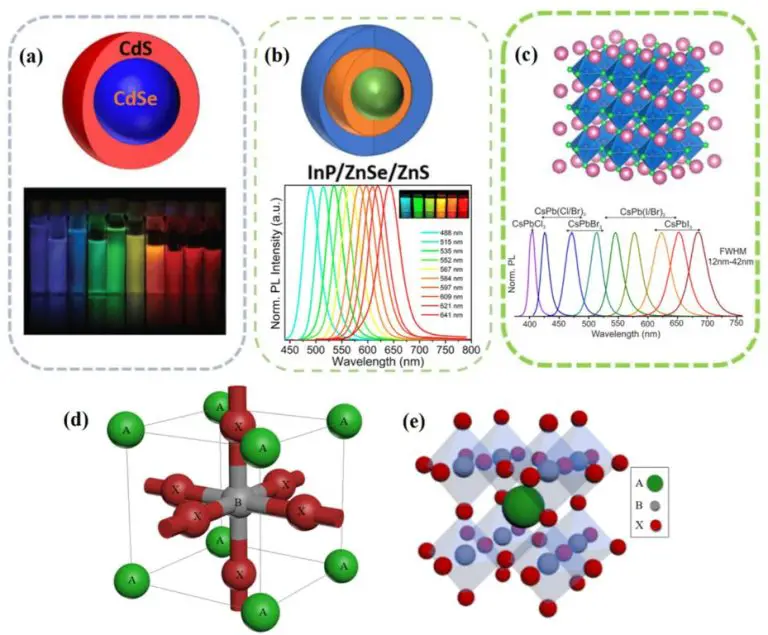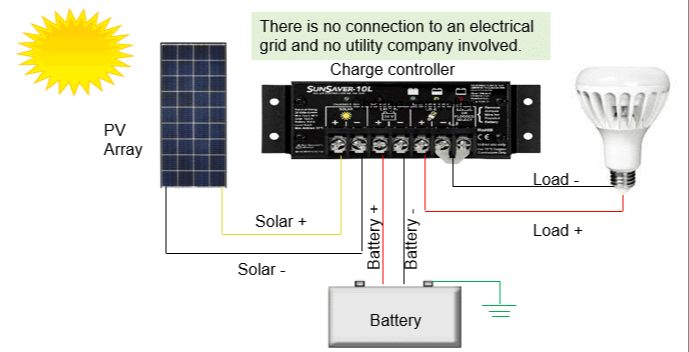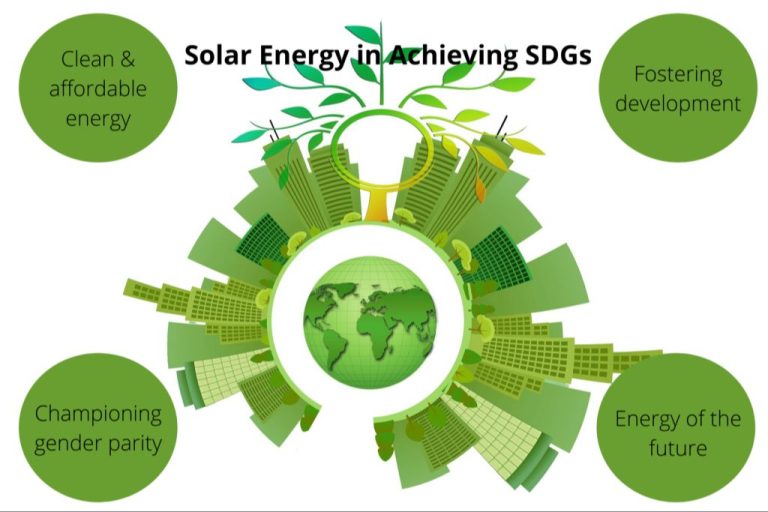Where Is Solar Energy Used At?

Solar energy is energy that is collected from the sun’s rays and converted into electricity, thermal energy, chemical energy, or mechanical energy. It is a renewable energy source. Solar technologies capture solar radiation (light and heat from the sun) to provide heat, light and electricity for homes, businesses and industry.
It works by photovoltaic cells in solar panels converting sunlight into electricity, using what is known as the photovoltaic effect to produce an electric current. This energy can then be used to power, heat and cool homes and businesses, providing electricity to appliances and devices. Solar batteries can store solar energy for use when the sun is not shining. Solar water heating systems can also use the sun’s energy to heat water.
Due to technological advancements, the cost of solar power has declined dramatically in recent years and has become more affordable. This along with its environmentally friendly nature makes solar a promising renewable energy source for the future.
“What is Solar Energy? (Definition, Pros, Cons and Examples)” https://www.twi-global.com/technical-knowledge/faqs/what-is-solar-energy
Residential Solar
Rooftop solar panel installations on homes are one of the most common uses of solar energy. As of 2022, there were approximately 3.6 million homes equipped with solar panels in the United States, up from just under 300,000 homes in 2012. This number is expected to continue rising, with projections of over 7 million homes having solar panels installed by 2032.
Many homeowners are choosing to go solar for environmental reasons, to gain energy independence, and to save on electricity costs in the long run. The upfront cost of installing a rooftop solar system has dropped significantly over the past decade, making it more financially viable. This, combined with solar tax credits and other incentives, has led to substantial growth in the residential solar market.
California leads the nation with over 1.3 million solar homes as of 2022. Other states with high adoption rates include Florida, Arizona, New Jersey, New York and Massachusetts. Homeowners with rooftop solar can use the electricity generated to power their home during the day, selling any excess back to the grid. This allows them to greatly reduce or even zero out their utility bills each month.
Commercial Solar
Solar energy is being increasingly adopted by businesses and installed on commercial buildings and properties. According to HSB, the rise of commercial solar installations is accelerating and affecting businesses that rely on traditional energy sources to operate (https://www.munichre.com/hsb/en/campaigns/trendspotters/rise-of-commercial-solar.html). Commercial solar installations provide businesses with access to renewable energy, reduce electricity costs, and lower their carbon footprint.
As outlined by Powering the Future, the growth of commercial solar, also referred to as C&I solar, is being driven by improving solar technology, favorable policies and incentives, and growing corporate commitments to sustainability (https://powermyhome.ca/powering-the-future-navigating-the-growth-of-commercial-solar-with/). Commercial systems can be installed on rooftops, parking structures, and open land. Typical applications include retail stores, warehouses, offices, schools, and apartment buildings. The modular nature of solar panels allows commercial systems to be scaled to match a building’s energy needs.
Research by Crago shows state policy incentives have been instrumental in spurring the adoption of commercial solar PV, highlighting the important role of regulations and subsidies (https://www.sciencedirect.com/science/article/abs/pii/S0301421518303501). As costs continue to fall and solar technology improves, commercial solar is expected to continue its rapid growth and play a major part in the transition to renewable energy.
Utility-Scale Solar
Utility-scale solar refers to large solar farms that generate electricity which feeds into the power grid. These huge arrays of solar panels can cover hundreds or thousands of acres and produce hundreds of megawatts of power. Some of the largest solar farms in the world include:
The Bhadla Solar Park in India spans over 10,000 acres and has a capacity of 2,245 MW, making it the largest solar park in the world [1]. It is located in Rajasthan and construction was completed in 2021.
The Huanghe Hydropower Hainan Solar Park in China covers 9,000 acres and has a capacity of 2,000 MW. It is located on the tropical island province of Hainan and was finished in 2020 [2].
Utility-scale solar farms provide clean renewable energy that can power hundreds of thousands of homes. Countries like India and China are rapidly scaling up solar capacity to meet energy demands and combat climate change.
Solar Thermal Energy
One of the most common uses of solar energy is for solar thermal applications like heating water. Solar thermal collectors, such as flat plates, evacuated tubes, or concentrating collectors, absorb sunlight and convert it into heat. This heat is then transferred to water or a heat-transfer fluid through a piping system.
Solar water heating systems can be used for residential, commercial, and industrial applications. They provide hot water for needs like washing, bathing, space heating, and industrial processes. Solar water heating is popular in warm climates and can provide up to 80% of a building’s hot water needs.
Solar space heating systems use solar thermal collectors and a distribution system to heat air or water to provide space heating. These systems can supplement existing heating systems and reduce energy costs in homes and buildings.
Solar process heating systems provide heat for industrial processes like food processing, laundries, dairy, pharmaceuticals and more. The thermal energy generated from the sun can be a cost-effective way to provide process heat.
Some examples of solar thermal installations are hotels in warm climates using solar hot water and hospitals using solar process heat for laundry facilities. Overall, solar thermal applications provide clean renewable heat for a variety of uses.
Solar Vehicles
Solar energy is being used to power various modes of transportation, including cars, boats, and planes. Solar-powered vehicles use photovoltaic cells to convert sunlight into electricity that charges batteries to run electric motors.
Some key examples of solar vehicles include:
-
Solar cars – These are typically lightweight vehicles designed for racing events like the World Solar Challenge. Some solar cars can reach speeds over 90 mph powered solely by the sun. Companies are also developing solar-assisted electric cars for everyday use. The Lightyear One solar electric car, for example, can add up to 44 miles of range per day from solar charging.
-
Solar boats – Solar boats have crossed oceans and raced around the world using only power from the sun. The MS Turanor solar-powered boat circumnavigated the globe in 2012.
-
Solar planes – The Solar Impulse 2 flew around the world in 2016 using only solar power. Solar planes can fly day and night using solar cells and batteries.
While solar vehicles have advantages like zero emissions and free solar fuel, challenges remain like high costs and low efficiency. But continued improvements in solar technology could make them a bigger part of sustainable transportation in the future.
Solar Gadgets
Solar gadgets are small consumer devices powered by solar panels that convert sunlight into electricity. These gadgets allow people to harness the power of the sun for a variety of practical uses. Some popular solar gadgets include:
Solar chargers – These portable devices contain solar panels that can charge your cell phone, tablet, cameras, and other USB-powered electronics when you’re on the go. They’re useful for camping trips, hiking, and other outdoor activities where you won’t have access to power outlets.
Solar lights – Tiny solar panels can power LED lights for outdoor spaces. String lights, spotlights and pathway markers provide illumination without any wiring or electrical connections needed.[1]
Solar ovens – Using reflectors and insulation, solar ovens can reach temperatures over 200°F and cook food simply using sunlight. This allows for cooking off-grid without any electricity or fuel.[2]
Solar watches – Watches with solar panels and a battery allow you to power your wristwatch just by being out in the daylight. This eliminates the need to ever change watch batteries.
Solar powered fans, radios, and lanterns are other practical gadgets that use the free energy from the sun. Innovation is also leading to new solar gadgets like bike locks, bug zappers, phone chargers and more.
Space Applications
Solar panels have become indispensable for space exploration and satellite operations in orbit. Solar energy allows spacecraft and satellites to operate for years at a time without needing to be refueled. The development of high-efficiency solar cells has been driven in large part by the needs of the space industry.
NASA and other space agencies rely on solar power for missions exploring distant planets and operating Earth observation satellites. Solar is the perfect renewable energy source in the vacuum of space where solar radiation is constant. Solar panels can reliably generate electricity to power a spacecraft’s systems and scientific instruments.
According to an article on Energy5, “Solar panels have revolutionized space exploration by providing a sustainable and renewable power source for satellites, space stations, and missions to distant celestial bodies like Mars.”1 Without solar energy, space programs would be extremely limited in capabilities and duration.
Looking ahead, more advanced solar power systems will enable ambitious future space missions. NASA is researching how to harness solar energy for interstellar probes that can travel to the far reaches of our solar system and beyond.2 Solar energy is key to unlocking the mysteries of outer space.
Common Obstacles
There are some key challenges facing the broader adoption of solar energy. The most significant barrier is often the high upfront costs of purchasing and installing solar panels and related equipment (https://www.illuminei.com/blog/from-dawn-to-dusk-the-rise-of-solar-energy-adoption-in-the-global-energy-landscape). Even as costs have come down dramatically over the past decade, the initial investment can still be prohibitive for many homeowners and businesses.
Another obstacle is the intermittent nature of solar power and the lack of adequate storage solutions. Solar energy can only be captured when the sun is shining, so cloudy days and nighttime hours limit energy generation. Developing efficient and cost-effective battery storage is critical for solar to reach its full potential and provide uninterrupted power around the clock (https://energy5.com/revolutionizing-renewable-energy-new-frontiers-in-wind-turbine-tech).
The building and regulatory environment also poses challenges in some regions. For example, homes and businesses may need electrical upgrades to support solar installations. Zoning laws, permitting processes, and grid interconnection requirements can complicate adoption. Policy and financing incentives can help address these barriers in adopting solar technology more widely (https://solarplanet.uk/green-energy-solar-panels-in-the-uk-a-comprehensive-overview/).
Future Outlook
The future looks bright for solar energy. According to the National Renewable Energy Laboratory (NREL), solar could provide up to 40% of U.S. electricity by 2035 and 45% by 2050 (NREL). This growth will be driven by continued cost declines and efficiency improvements in solar technologies.
One major area of innovation is solar cell efficiency. Researchers are developing new materials and manufacturing techniques to improve efficiency. Perovskites and organic materials show promise for boosting the efficiency limits of traditional silicon solar cells (MIT).
Grid management and energy storage will also be critical to accommodate high solar penetration. Solutions like demand response, smarter inverters, and utility-scale batteries are emerging to balance supply and demand. With enabling technologies and supportive policies, solar appears poised for massive growth in the coming decades.






